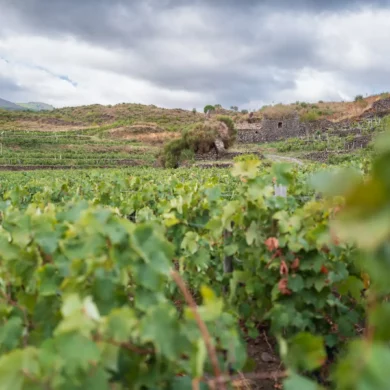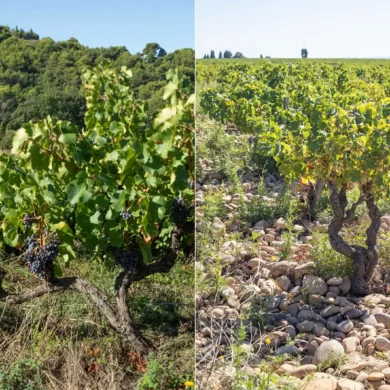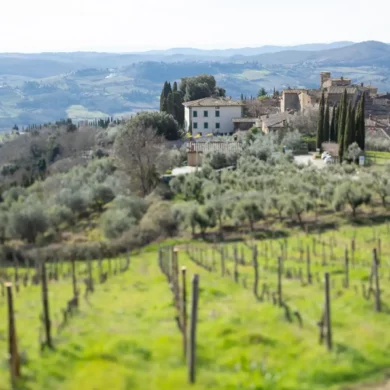What a sight Tenuta di Trinoro must be in spring, I thought, framing one of the winery’s iconic stone urns amidst its Bordeaux-inspired vineyards. Few places in the world can produce the levels of saturated green that the Val d’Orcia is capable of in April and May — a sumptuous display of rolling hills and countryside idylls, punctuated only occasionally by stately cypress.
At Tenuta di Trinoro, they follow the grapes wherever the grapes want to go.
But that wasn’t the view in my camera’s viewfinder. It was February, and there wasn’t a leaf in sight. Yet the value of this plot of land and what it was aspiring for wasn’t lost on me. Geologically, it was a gathering place, where ancient rivers deposited silt and gravel, the preferred terrain for Bordeaux varieties, but especially Cabernet Franc. In 1990, Andrea Franchetti took cuttings from Pomerol and planted them here. They’ve returned the favor by offering a wine redolent of black plums and Earl Grey that is saturated with perpetual tannins that refuse to relax with age.
But in that moment, I needed to finish the shot and get back to the Land Rover with Lene Bucelli, who oversees communications and marketing at Tenuta di Trinoro and who knows this place well. My fingers were turning brittle in the Val d’Orcia’s winter wind. The gloves I desperately needed were left in a hotel room in Florence, a two-hour drive away. So were warmer pants. Rookie mistakes, both.
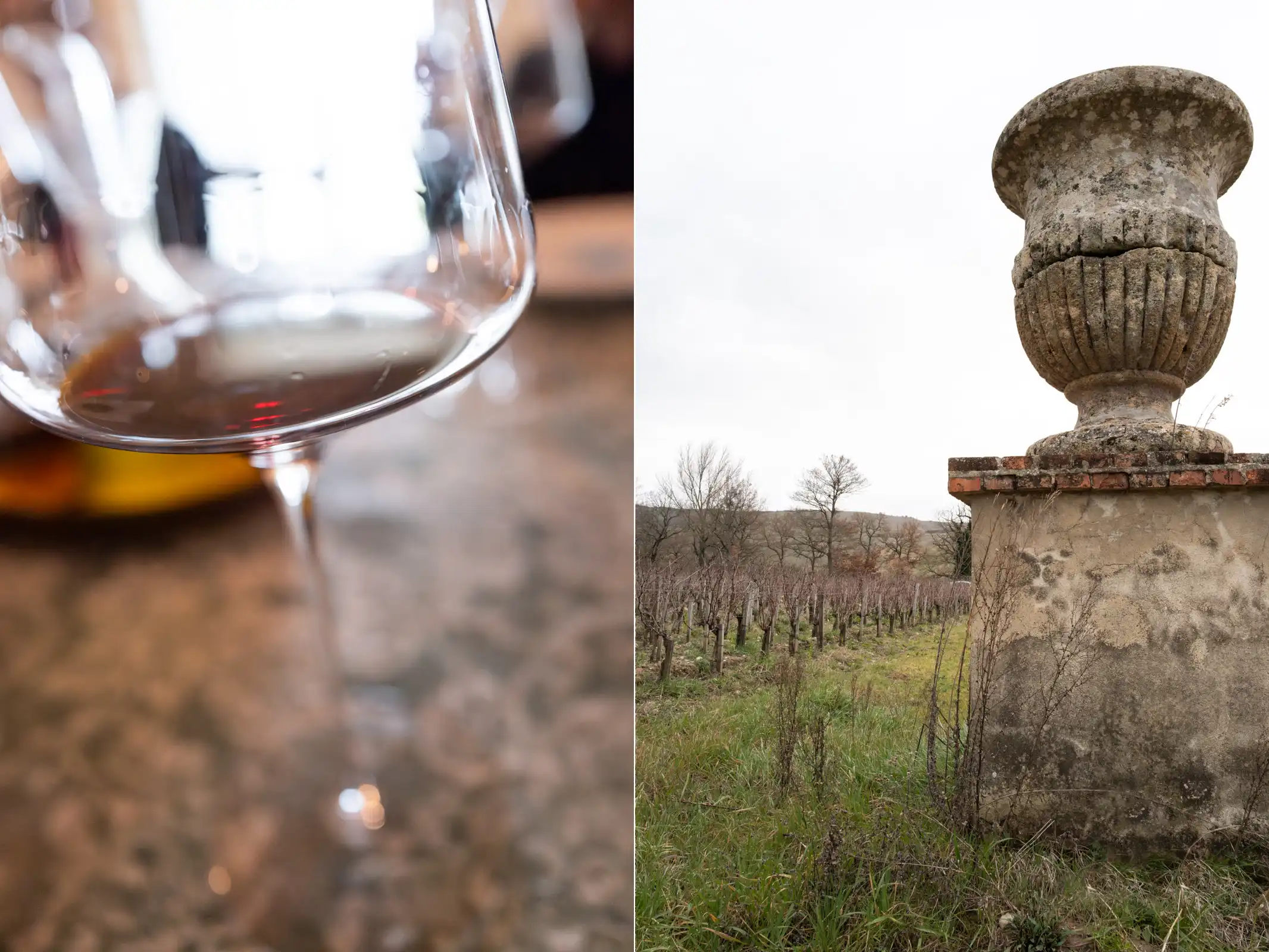
But before we could move on to the next vineyard, we had business to attend to. “I feel it is always best to taste a single-vineyard wine in the vineyard where it comes from,” Bucelli said, setting down a wicker basket with bottles, and pouring me and my colleague-for-the-day — London-based writer and wine consultant Jason Millar —a glass of the 2016 Campo di Magnacosta. “Cabernet Franc performs quite well here because it is a slow ripener,” Bucelli said. “And we can always wait until October to harvest it.”
This little fact makes a world of difference as the once-common October harvests across Italy become increasingly rare. Like a stew that needs hours to simmer and come together, some grapes benefit from the extra month or two to sort themselves out. In this part of Tuscany, Cabernet Franc is among them.
We drove on to two other vineyards and tasted a 2016 from each: Campo di Tenaglia and Campo di Camagia. Each was different in their own way, with Campo di Tenaglia being the most stern and intense. Clearly, the added hang-time for the grapes meant wines naturally geared for a maximalist; someone who craves more aroma, more fruit and more tannin. Each site was certainly bolder than anything one might find from their varietal counterparts in the Loire.
We were nearly nine years into the life of these wines, and the tannins were beginning to bottleneck on my palate. I wondered if the three would harmonize better if they were blended together, but that was missing the point. These three single-vineyard wines with tiny allocations (between only 900 and 2,000 bottles per year), are here to expose Cabernet Franc; to lend us a pencil drawing of its bony details.
At Tenuta di Trinoro, they follow the grapes wherever the grapes want to go.
Wines Out of Thin Air
Unless you are talking about the serrated summits of the Alps, it is very hard to find a place in Italy with little to no winemaking tradition. Yet Val d’Orcia, one of the most scenic places in ever-popular Tuscany, is one of them. And because of that, the story of Tenuta di Trinoro feels a bit American: An entrepreneur with loads of guile (Franchetti) saw potential for something that no one else did, and so he planted a vineyard. And then another. And another. It is a narrative of prescience that feels familiar to fans of Ridge Vineyards, Mayacamas, Eyrie Vineyards, Erath Winery and Gruet.
“Andrea was the one who brought viticulture here,” Bucelli said. I pressed her on this, for the Roman Empire’s wine-stained fingerprints were everywhere, or so I thought. “No,” she said. “And certainly the Etruscans made wine, but here [in this part of Val d’Orcia], we’ve never found any evidence, at least nothing we can be certain of.”
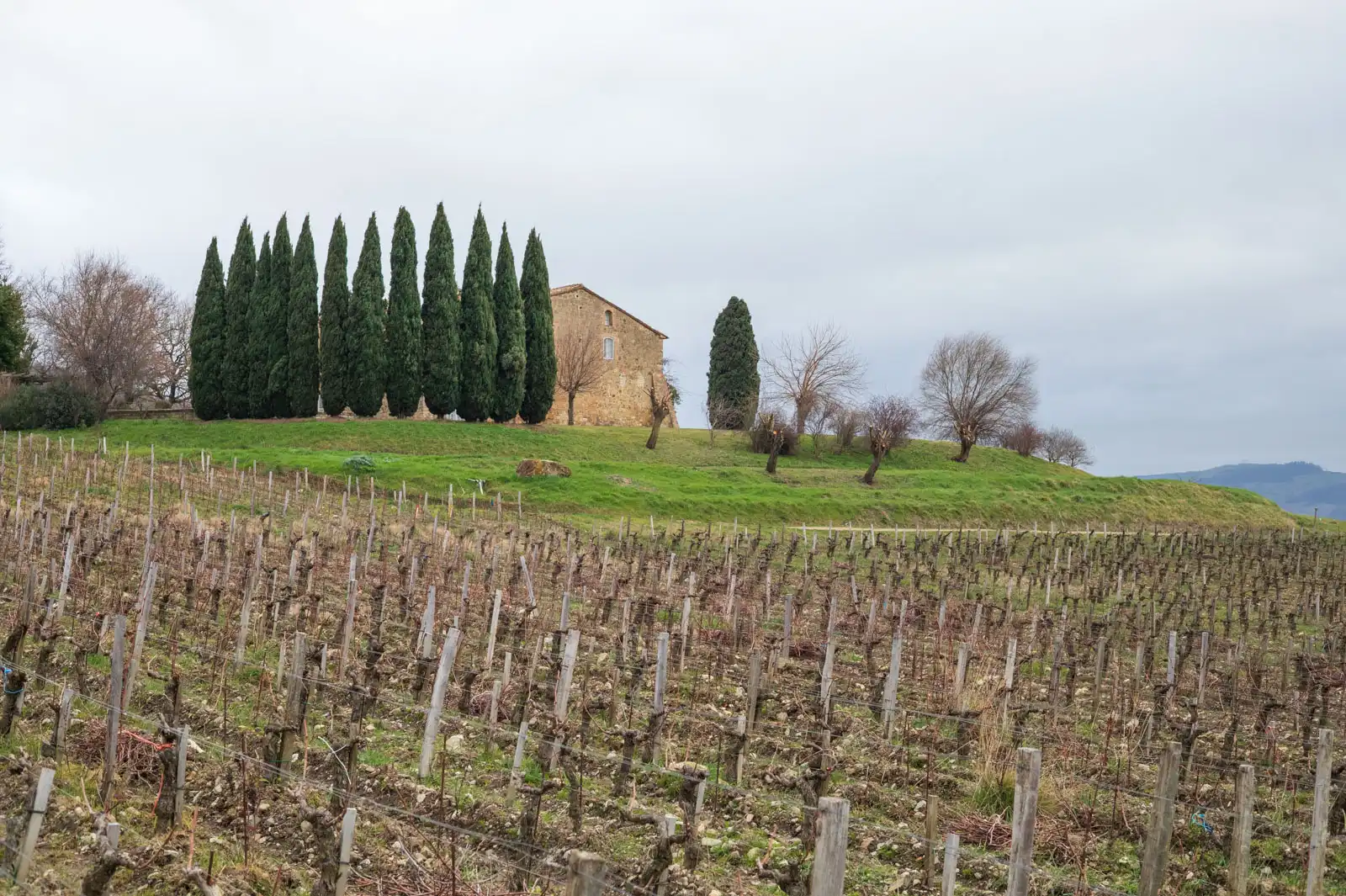
Despite being from Rome, Andrea’s mother was American, and he spent part of his childhood stateside. Surrounded by freethinkers and artists (his uncle was Cy Twombly), Andrea had an insatiable wanderlust, which included cycling to Afghanistan in the 1970s. His gateway to wine was via the restaurant business, and he quickly developed a fondness for the First Growths of Bordeaux.
He happened upon Tenuta di Trinoro by chance in the 1980s, and eventually started planting Cabernet Franc, Merlot, Petit Verdot, Cabernet Sauvignon and Sémillon. He took almost all of his cues from Bordeaux: the vine stock, the plant density, the vine training and the use of oak. Soon, the wine world took notice, and Andrea’s wines became coveted collectors items thanks to high point scores from key critics, as well as the unabashed intensity they offered. In a globalized world, the remoteness of a vineyard no longer mattered. In fact, Andrea’s eccentric character and remote personality only fueled the intriguing image of a mysterious iconoclast doing his own thing in the backwoods of Tuscany.
Andrea would also set off for Mount Etna in the early 2000s, and establish Passopisciaro, which he is perhaps better known for (at least to my generation of wine drinkers). There he would play with power and international grapes as well, but eventually come back around to Nerello Mascalese, which did something even Sangiovese could not: win him over.

Andrea’s son, Benjamin, would flank him at the winery beginning in 2016. However, a grave illness would accelerate Andrea’s plans for generational transition, which he initiated with Benjamin in 2019. He passed away from that illness on December 5, 2021 at the age of 72.
As I found out at Passopisciaro last fall, much of the same team that worked with Andrea Franchetti at Tenuta di Trinoro remain in place, most notably head winemaker Lorenzo Fornaini. There is a commendable sense of loyalty to the man and his vision at both estates, which is evident in the wines. They’re pin-sharp, robust, exquisitely made. But it also begs the question: where is it headed now?
The Cab Franc Future
“The wines of Tenuta di Trinoro are born like this. This is the estate. It is what we do.”
Lene Bucelli
Tenuta di Trinoro
I asked Bucelli how they felt they separated themselves from the many other Bordeaux-based blends from around Tuscany, namely Maremma and Bolgheri, and she paused. “We feel these wines fall outside the category of ‘Super Tuscan,’” she noted, adding that the impression those two words give is one slathered in oak. “Our wines spend only six to eight months in barrique, and most of those barrels are up to seven years old.” Indeed, they do not taste oaky.
But furthermore, she went on to say, the differences come down to climate, terroir and the DNA of the wine. Certainly, Val d’Orcia is nothing like coastal Maremma and Bolgheri, but it isn’t too far off from Chianti Classico. “But most of the [Bordeaux-inspired] wines from there are made by producers who first did something else: I made a Chianti Classico, and now this. Whereas the wines of Tenuta di Trinoro are born like this. This is the estate. It is what we do.”
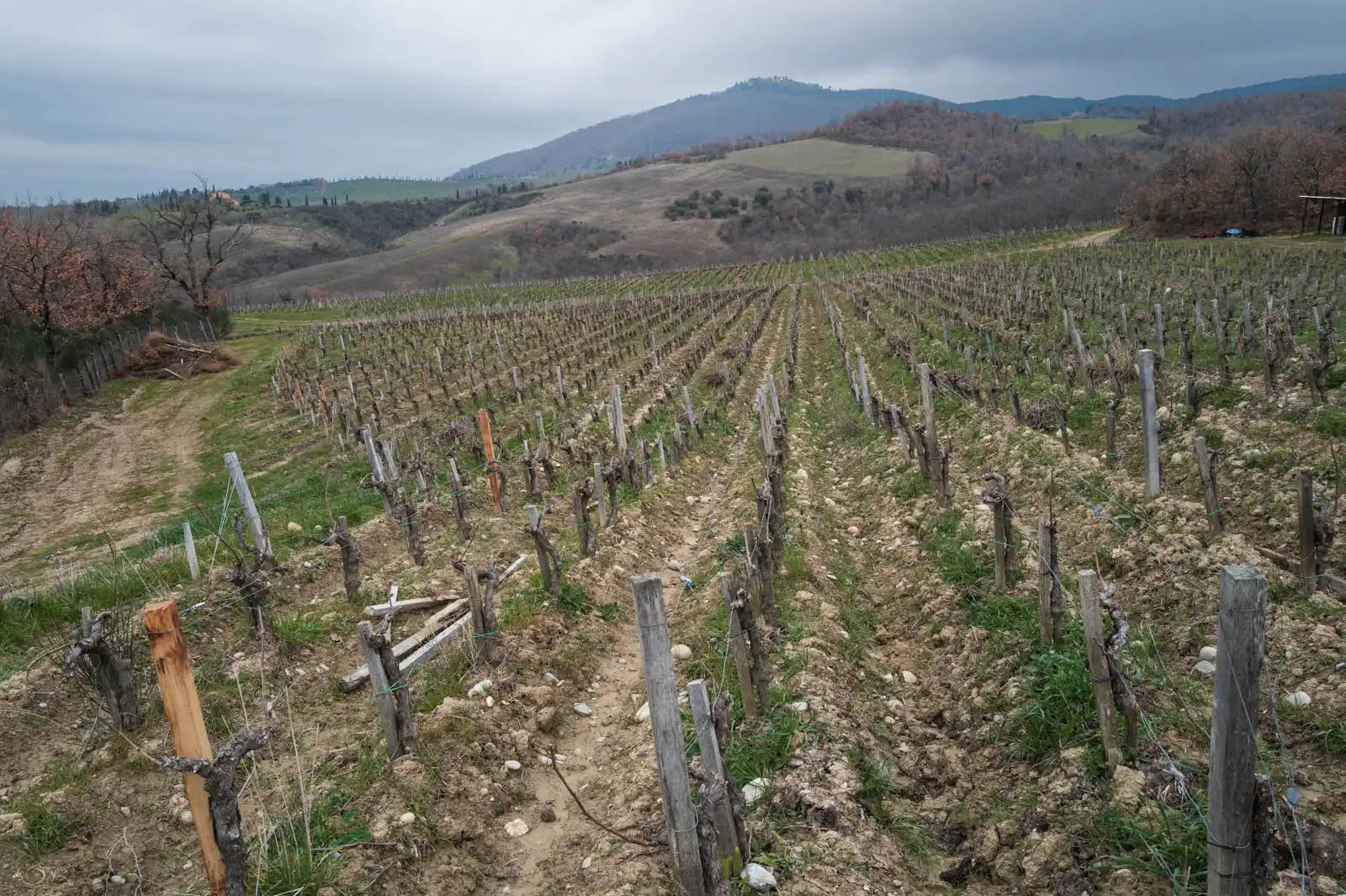
There is plenty of proof to validate that mantra. To achieve a fine wine in any category with any grape, one certainly has to be devoted. Distractions, vanity projects, and chasing fads will always lead to a hollowed-out wine. While focusing on Bordeaux varieties is not singular to Tenuta di Trinoro, pursuing Cabernet Franc to this extent — in this remote, mountainous valley — is.
And if anything, the future of Tenuta di Trinoro will be more Cab Franc centric, too.
“Cabernet Sauvignon and Petit Verdot are starting to struggle with these super hot vintages,” Bucelli noted, adding that it has resulted in uneven maturation at times. “The wines from those grapes have been too ‘monochord’ and after 2015, we have had very few vintages where all four [of the estate’s grapes] were involved in the blend of the Tenuta di Trinoro.”
In fact, a comparison of two recent vintages — 2021 and 2020 — shows the flexibility required of this new age. In the former, Merlot lead the way, accounting for 60% of the final cuvée; in 2020, Cabernet Franc claimed 92% of the blend.
But Could the Future Be Bianco?
However, the real surprise for me came in the form of Tenuta di Trinoro’s white wine, a stunningly expressive Sémillon from a sandy plot hill up the hill, surrounded by forest. The wine, which is highly allocated with only 3,000 bottles made per year, initially had its compass of inspiration pointed at Sauternes.
“Andrea wanted to make a sweet wine,” Bucelli said. “But perhaps it’s just too warm here, because it always became too sweet and it didn’t achieve the complexity he wanted for such a wine. So for many years, it was just the white wine of the family.” Then, in 2018, they brought the wine to market.
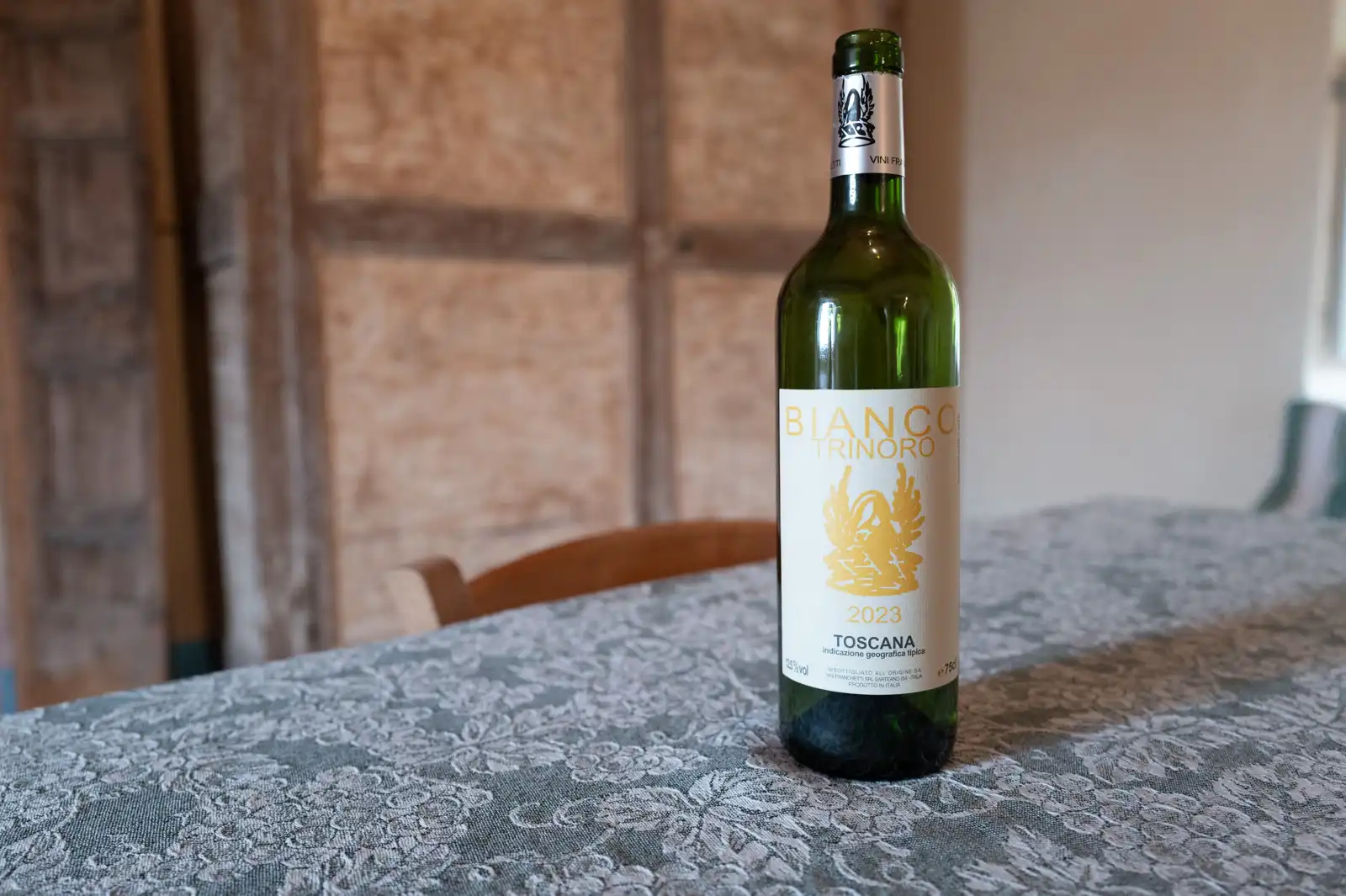
Bianco Trinoro is pure exuberance. Few white wines can manage to be this eager without being overly so. Its fruit aromas veer more toward the pear end of the spectrum, with loads of white flowers and citrus-zest elements keeping the wine fresh and dashing. But its silkiness, its persistence, its longevity … they all made me want to come back for more.
Of course, this vineyard is too unique, too specific and most importantly, too small, to produce anything resembling “the future of Tenuta di Trinoro.” The future for this estate will always be on the red side of the spectrum, and rightly so.
While describing the estate’s approach to blending at the start of our visit, Bucelli had said “nothing is set in stone here.” I found that to be an appropriate headline for the visit. Andrea Franchetti’s legacy still looms large over this place, as though he might walk through the door once again. It is not only his spirit of trying new things that hangs around; it is the idea that you cannot force wines into a shape they do not want to be. Sémillon does not want to be sweet here. Cabernet Sauvignon and Petit Verdot are looking for a new role. But Cabernet Franc continues to shine, choosing to express itself through each individual site.
The future of this place will be the same as the past: following the grapes where they want to go.
Tasting Report: Wines from Tenuta di Trinoro
Go deeper into the wines with this report on nine different wines tasted during this visit, exclusive for paying subscribers of Opening a Bottle.
Note: My travels to Italy were paid for by the Anteprima di Toscana. I arranged travel to Tenuta di Trinoro on an afternoon off via the winery’s press agency. Learn more about my editorial policies.


